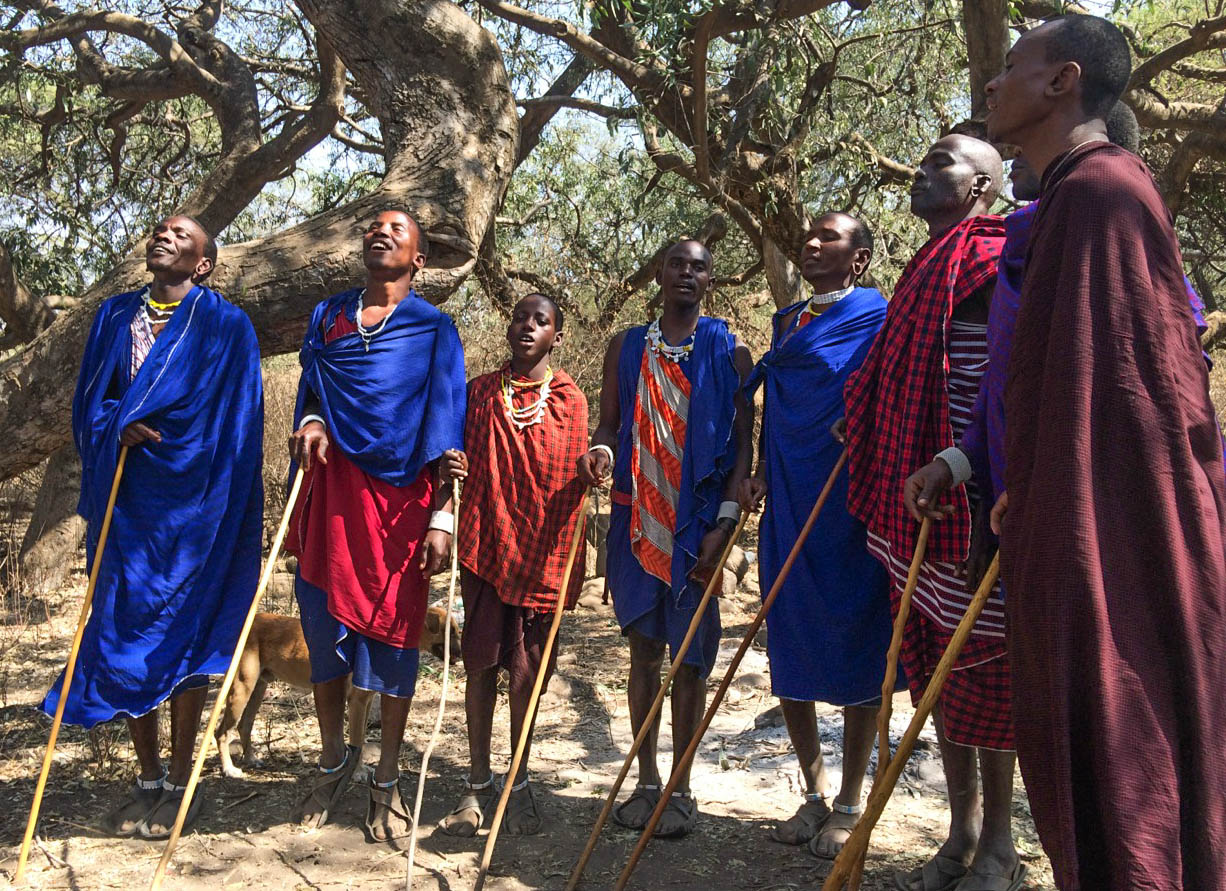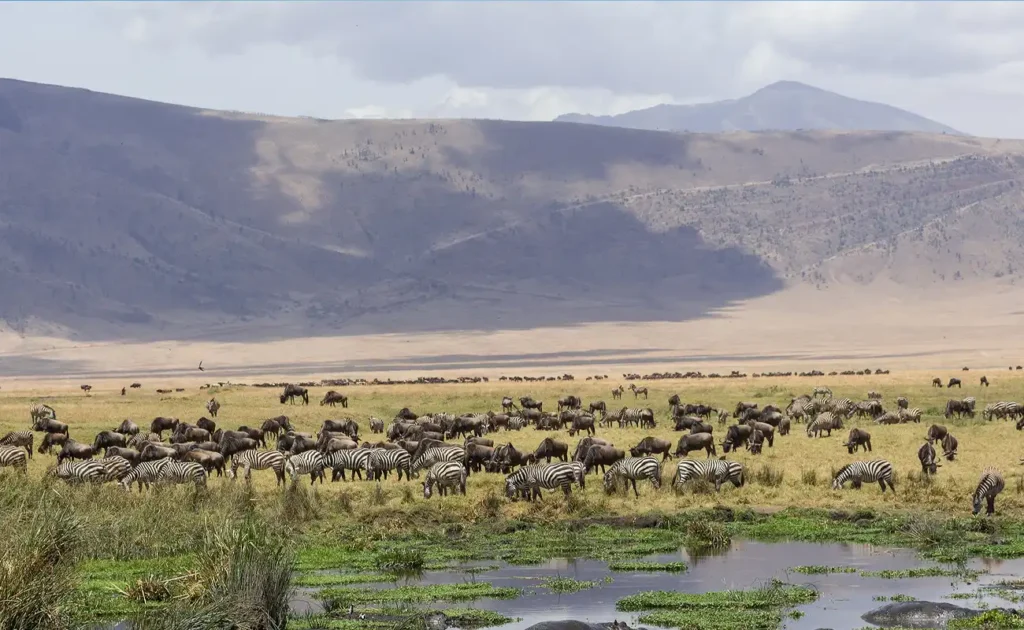Isn’t it fascinating how a simple greeting can offer a window into a culture’s soul? In Tanzania, the way people greet each other goes beyond mere words—it’s a gesture filled with warmth and respect. A handshake, often accompanied by a gentle embrace, is a common greeting, signifying unity and mutual respect.
Historically, these greetings have roots in the Bantu cultures, where acknowledging each other’s presence is an essential social norm. A statistic reveals that over 80% of Tanzanians practice the traditional handshake, making it an enduring custom. Additionally, the Swahili phrase “Habari gani?” meaning “What’s the news?” highlights the emphasis placed on personal interaction and the importance of community bonds.

Traditional Greetings in Tanzania
Traditional greetings in Tanzania are deeply rooted in culture. Handshakes are essential and often accompanied by a slight bow, showing respect. When greeting elders, it is customary to use both hands for a handshake. Smiling and maintaining eye contact are also important. These gestures create a sense of warmth and welcome.
Swahili, the national language, plays a key role in greetings. Phrases like “Habari gani?” (How are you?) and “Shikamoo” (I respect you) are common. “Shikamoo” is specifically used for elders, showing deep respect. Younger people usually respond with “Marahaba,” meaning “I am delighted.” This exchange emphasizes respect for age.
Different ethnic groups in Tanzania have their unique greetings. For instance, the Masai greet each other by placing a hand on the other’s head and saying “Supa.” The Chaga people might bow slightly while extending their hands. Despite these variations, the underlying message is always respect and kinship. This diversity enriches Tanzanian culture.
Greetings also change based on the time of day. In the morning, people say “Habari za asubuhi” (Good morning). In the afternoon, it shifts to “Habari za mchana” (Good afternoon). By evening, you will hear “Habari za jioni” (Good evening). These time-specific greetings show that Tanzanians value acknowledging each other’s presence all day long.
The Significance of Handshakes and Verbal Salutations
In Tanzania, handshakes are more than just a formality; they symbolize trust and connection. When meeting someone, offering a firm handshake accompanied by a warm smile sets a positive tone. This act of greeting conveys mutual respect and goodwill. Elders receive special attention, often greeted with both hands. This dual-handshake signifies deeper respect and reverence.
Verbal salutations in Tanzania add another layer of cultural richness. Common phrases like “Habari gani?” (How are you?) or “Shikamoo” (I respect you) are everyday expressions. These phrases aren’t just polite; they reinforce social bonds. Tanzanians take the time to ask about each other’s well-being. This practice fosters a sense of community and belonging.
Handshakes and verbal greetings often vary by region. In urban areas, a swift, firm handshake is typical. In rural settings, handshakes might be slower and more deliberate. Regardless of the speed, the intention remains the same: to show honor and respect. This regional variation adds to the colorful mosaic of Tanzanian traditions.
Combining handshakes with verbal salutations strengthens the social fabric. The tandem use of physical and verbal greetings enhances interpersonal connections. It reminds everyone of the importance of showing respect in all interactions. These simple yet profound gestures help maintain harmony. Tanzanians cherish these traditions, passing them down through generations.
Cultural Variations in Tanzanian Greetings
Tanzania’s diverse ethnic groups enrich its greeting customs. The Swahili coast has its unique way of welcoming guests with a warm handshake and the phrase “Karibu,” meaning “Welcome.” Meanwhile, in the northern regions, the Masai use a gentle touch on the head paired with the word “Supa.” Each ethnic group brings a unique flavor to greetings, reflecting their values and traditions.
In the central highlands, the Chaga people have their own way of greeting. They might start with a respectful bow while shaking hands. This bow can be seen as a gesture of humility and recognition. Additionally, the Chaga often engage in a conversation after the initial greeting. This small talk helps maintain and strengthen community bonds.
Religious influences also shape greetings in Tanzania. Among Muslim communities, it is common to hear “As-salamu alaykum,” which means “Peace be upon you.” The response is “Wa alaykum as-salam,” meaning “And upon you be peace.” These greetings highlight the importance of peace and mutual respect. Similarly, in Christian communities, you might hear “Bwana asifiwe,” meaning “Praise the Lord.”
Special events and ceremonies bring out even more colorful greetings. During weddings or festivals, greetings are often more elaborate and joyful. People might use traditional songs or dances as part of their welcome. These celebrations showcase the rich cultural heritage of Tanzania. They remind everyone of the importance of unity and togetherness.
Modern Influences on Greeting Practices in Tanzania
In recent years, modern influences have subtly altered the traditional greetings in Tanzania. The prevalence of technology, especially mobile phones, has introduced new ways to greet, like sending text messages or using social media. People often use apps like WhatsApp to send greetings. Emojis have become part of these virtual interactions, adding a playful touch to the greetings. This shift shows how digital communication is becoming a part of everyday life.
Urbanization plays a major role in changing greeting practices. In cities, people often adopt greetings influenced by global cultures, such as simple nods or short phrases like “Hi” or “Hello.” While traditional greetings remain important, these modern greetings offer convenience and speed. They cater to fast-paced city lifestyles where time is of the essence. However, respect in greetings is never compromised.
The expansion of tourism in Tanzania has led to an exchange of cultural practices. Tourists often introduce greetings from their own countries. Locals, in turn, learn and sometimes adapt these new greetings. This interaction highlights the spirit of diversity and openness in Tanzanian culture. It leads to greater understanding and global harmony.
The educational system also fosters changes in greeting customs. In schools, students often greet their teachers with a mix of traditional and modern methods. They might say “Good morning” or “Good afternoon” alongside Swahili phrases. This blend of greetings nurtures respect and friendliness among students and teachers. It mirrors a balanced approach to tradition and modernity.
At workplaces, professional settings often demand different greeting styles. A quick handshake or a polite nod might replace longer traditional greetings. Emails and professional messages also form part of the greeting culture today. Despite these changes, the core essence of respect and acknowledgment remains. Tanzanians continue to value meaningful interactions.
The combination of tradition and modernity reveals a dynamic cultural landscape. As Tanzania navigates a changing world, its greeting practices reflect resilience. Embracing new influences while preserving old traditions enriches the cultural fabric. This blend creates a welcoming environment for everyone. Tanzanian greetings truly represent a bridge between the past and the present.
Key Takeaways
- Tanzanians blend traditional greetings with modern technology like text messages and emojis.
- Urbanization brings quicker greetings such as “Hi” or “Hello,” especially in cities.
- Tourism introduces new greeting styles, fostering cultural exchange and understanding.
- Schools teach a mix of traditional and modern greetings to respect all customs.
- Workplaces often use quick handshake or email greetings for professional settings.
Conclusion
Tanzanian greetings are a vibrant reflection of the country’s rich cultural tapestry. From traditional handshakes and Swahili salutations to modern digital interactions, these practices highlight the adaptability and openness of Tanzanian society. Despite the changes, the core values of respect, warmth, and community remain steadfastly preserved.
As global influences continue to shape Tanzania, the blend of old and new greeting practices serves as a testament to the country’s cultural resilience. This fusion not only enriches personal interactions but also fosters connections across diverse backgrounds. Tanzanians exemplify how traditions can gracefully evolve while maintaining their meaningful essence.



